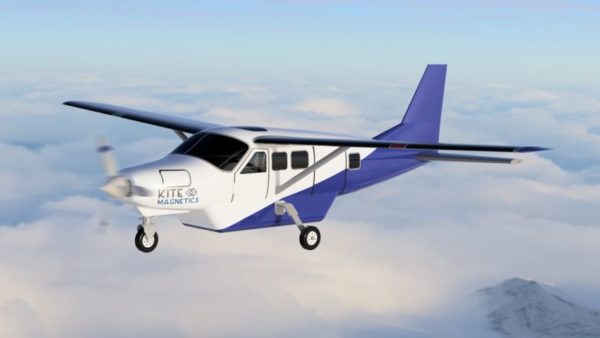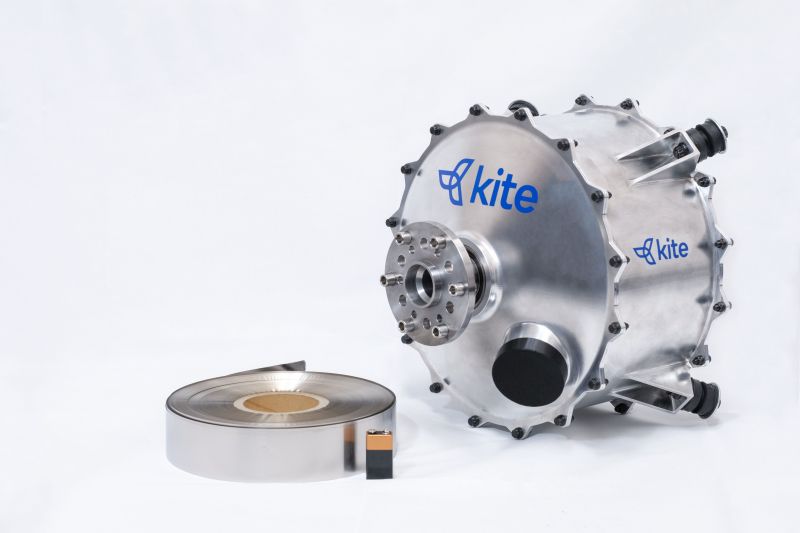Melbourne startup Kite Magnetics launched its 120 kW electric motor at the Avalon Air Show in Victoria this week, claiming the new lightweight offering will not only increase the range of electric aircraft but also enable a cleaner future for air travel.
Using nanocrystalline materials technology created by Dr Richard Parsons and Professor Kiyonori Suzuki at Monash University’s Department of Materials Science and Engineering, Kite Magnetics has developed a high-performance electric motor that it says will enable small to medium-sized aircraft to fly further, carry more and emit less.
“We are proud to officially launch the world’s most powerful air-cooled electric motor for aircraft, the KM-120,” the company said. “Our lightweight electric motor is more powerful than a typical small car but only weighs as much as a full suitcase thanks to the use of our unique new magnetic material called Aeroperm.”
Parsons, founder and chief executive officer of Kite Magnetics, said the company’s technology involves a combination of novel nanocrystalline magnetic materials with advanced manufacturing methods that allows for the development of electric motors that are “significantly lighter and more efficient than anything available on the market today.”
The key nanocrystalline core material, which is mostly iron, cuts the energy wasted compared to existing core alloys, due to “quantum mechanical effects.”
“We are excited to launch not only the world’s most powerful air-cooled electric motor for electric aircraft but also the first commercially available electric motor that uses this new type of magnetic material,” Parsons said.
“With our Aeroperm magnetic materials technology, we can reduce the energy wasted in parts of an electric motor by more than 10 times. This means we can use air cooling even at very high power levels. This makes our motors simpler, more reliable and extremely lightweight.”
Kite Magnetics said the new KM-120 measures 300 mm x 387 mm and weighs in at 23 kgs, a figure that rises to 35 kgs when all the mountings, flange, etc are included. The company is now accepting orders for its new motors and expects to begin shipping to existing customers over the coming year.
The unveiling of the new motor comes just five months after Kite Magnetics secured $1.85 million (USD 1.25 million) in funding from venture capital fund Galileo Ventures, Investible Climate Tech Fund, Possible Ventures, Boson Ventures, and Breakthrough Victoria to accelerate the development of its technology.

Image: Kite Magnetics
Parsons sees potential to create electric motors for everything from cars to vacuums, but said aviation is the company’s initial focus, given the global aviation industry contributes three times more to climate change than all of Australia’s emissions combined.
“Currently, the biggest limitation of the adoption of electric aircraft is that they do not have enough range compared to conventional planes. The idea is that with our tech, electric aircraft can fly further and carry more,” he said.
“Our goal is to produce the enabling technologies for electric aviation so that emissions-free flight becomes possible in years, not decades. When the day comes that you can take off in an electric plane and see our motors hanging below the wing we will have achieved our mission.”
Parsons said outside of aviation, the company also sees opportunities for its electric motor and generator technology to transfer to a wide range of other industries, such as cars, buses, boats and trains.
This content is protected by copyright and may not be reused. If you want to cooperate with us and would like to reuse some of our content, please contact: editors@pv-magazine.com.









If this revolutionary lightweight electric motor can be scaled down it could revolutionise powered hang gliding. The mosquito powered harness weighs 26kg fueled up and provides 2 hours of propulsion at 14hp when fitted to a hang glider. Even that is too heavy for thermaling. Lighter motors and batteries would be a game changer. Electric cars are already driving progress in battery output and solar panels are getting lighter every year. One day I can foresee a rigid hang glider covered with solar panels crossing continents unassisted.